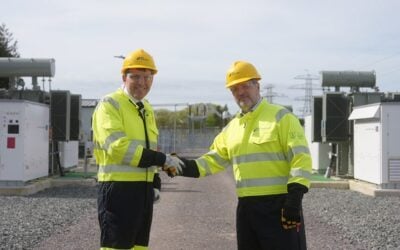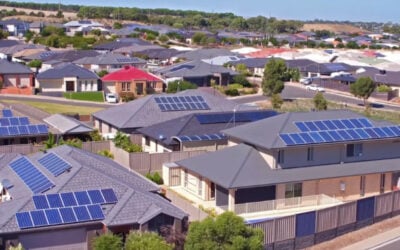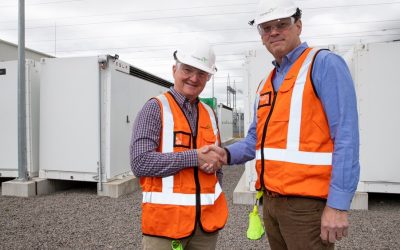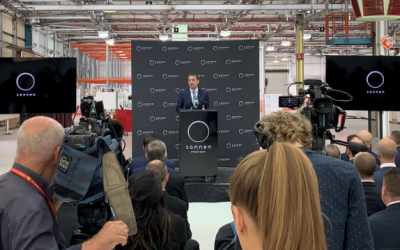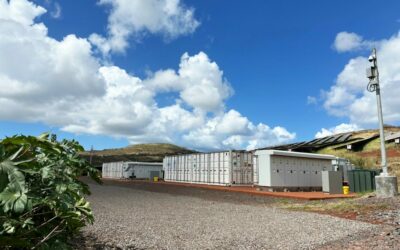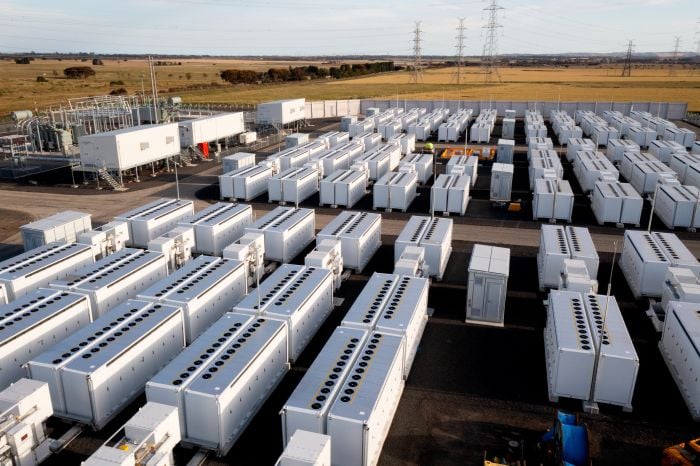
Victoria, Australia, will target the deployment of 6.3GW of renewable energy storage by 2035, one of the most ambitious policy goals set by a state or national government anywhere in the world.
State Premier Daniel Andrews and energy minister Lily D’Ambrosio announced the target yesterday, describing it as a measure that will lower power prices, create employment and enable increased uptake of renewable energy in their state.
Enjoy 12 months of exclusive analysis
- Regular insight and analysis of the industry’s biggest developments
- In-depth interviews with the industry’s leading figures
- Annual digital subscription to the PV Tech Power journal
- Discounts on Solar Media’s portfolio of events, in-person and virtual
Or continue reading this article for free
Offering a reaction to Energy-Storage.news, energy economics expert Dr Bruce Mountain of the Victoria Energy Policy Centre (VEPC) thinktank called it “an excellent and significant step in the right direction”.
“Though the details of delivery have not yet been worked out, its establishes a solid foundation. It signifies the Government’s recognition of the importance of storage to the energy transition and will surely boost investor and consumer confidence,” Mountain told Energy-Storage.news.
It comes off the back of the Climate Change strategy introduced by the pair’s Labor Party. That targets 50% of Victoria’s electricity coming from renewable energy by 2030, in a state that currently relies on coal for about 60% of its power.
The energy sector made up about 70% of Victoria’s emissions in 2019, with transport accounting for about a quarter. Labor has set a policy target for net zero emissions from the state by 2050 and is working towards that goal in four-year blocks. In 2020, it exceeded its target to reduce emissions 15% – 20% from 2005 levels, getting closer to 30%.
The government sees energy storage as critical to enabling climate, energy security and economic goals, including large-scale battery energy storage system (BESS) projects and distributed battery storage with rooftop solar PV at peoples’ homes and businesses.
Victoria’s new target is greater than New York’s, which is 6GW by 2030 – currently the highest target in the US, the world’s leader in battery storage growth – albeit Victoria does have an extra five years to deliver.
The Andrews government has also set an interim target of 2.6GW by 2030. The target includes eight hour-plus long-duration energy storage (LDES) as well as shorter duration.
“Victoria is already the renewable energy capital of Australia, and now, we’ll have the biggest energy storage targets in the country too,” Andrews said yesterday.
“We’ve cut emissions by more than any other state, tripled the amount of renewable energy and created thousands of jobs. We’re not just talking about climate action – we’re getting on with it.”
Energy minister D’Ambrosio meanwhile noted that the targets will create “up to 12,700 jobs” in the state, but more importantly will save families money on their energy bills and “slash our state’s emissions for generations to come”.
The target was announced alongside a AU$157 million (US$101.77 million) support package for renewables and storage projects in the state.
That included AU$119 million for a 125MW battery storage and advanced inverter project in one of Victoria’s planned Renewable Energy Zones (REZ) and AU$7 million funding for another 100MW battery storage and advanced inverter project at an earlier stage of development.
Victoria is already home to Australia’s largest BESS to date, the 300MW/450MWh Victorian Big Battery, which went into action at the beginning of this year.
Expert view: Dr Bruce Mountain, Victoria Energy Policy Centre
In June, Energy-Storage.news spoke with Mountain about VEPC’s proposal for the introduction of a national electricity storage target policy.
That was shortly after Australia’s Prime Minister Anthony Albanese, then newly elected after running on a platform that included climate action, pledged the creation of a AU$20 billion programme to enable the country’s grid network to transition to renewables.
VEPC said at the time that an electricity storage target would be a wise and targeted use of Albanese’s billions in funding for what the Prime Minister’s national Labor Party had dubbed the ‘Rewiring the Nation Corporation’. Today, we asked Bruce Mountain for some views on Victoria’s state target.
What’s your immediate reaction to the setting of the target?
BM: This is an excellent and significant step in the right direction. Though the details of delivery have not yet been worked out, it establishes a solid foundation. It signifies the Government’s recognition of the importance of storage to the energy transition and will surely boost investor and consumer confidence.
Are the 2035 target and the interim 2030 target set at appropriate benchmarks?
BM: The target signals an implied complete decarbonisation by 2035. I would imagine 6.3GW, and assuming weighted-average storage duration of around five hours (around 18GWh), should be sufficient to ensure reliable supply in Victoria with a completely decarbonised system dominated by variable renewable supply. I would not be surprised if the 2030 target is expanded in due course.
Are the right mechanisms and funding in place for the targets to be achieved?
BM: At this stage the target might be described as an insurance mechanism. I think it will almost certainly develop in time into a proactively managed programme. What has been announced is a solid platform that will facilitate the development of such a programme.
Which are best for Australia: state-by-state storage targets, national targets, or both?
BM: The electricity system is decentralising in response to technology change, administrative capacity in government, and in Australia also constitutional power i.e., electricity supply is the responsibility of the States.
The States are getting ever more actively involved in the key parts of the energy transition. Victoria took the lead, but other States are actively following suit.
The Commonwealth has an important role to play in facilitating co-ordination and in supporting the States including through policies to improve the financial attractiveness of storage. The States are leading, but there is increasing awareness by the Commonwealth of the magnitude of its renewable electricity targets (82% by 2030) and I hope that this will translate into storage policies that support the lead taken by Victoria, and of the other States that follow in its wake.

